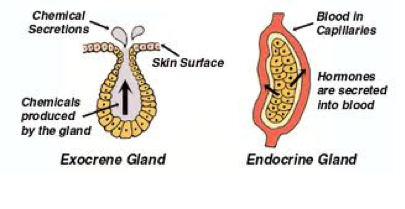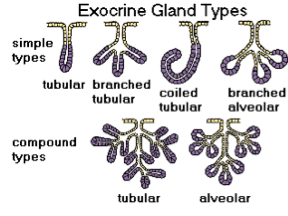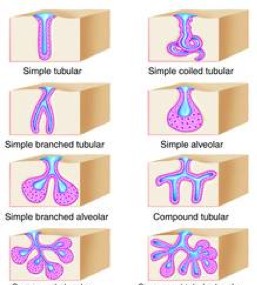Sign up for FlowVella
Sign up with FacebookAlready have an account? Sign in now
By registering you are agreeing to our
Terms of Service
Loading Flow





33. A gland consists of one or more cells that make and secrete a particular product. Glands are classified as endocrine or exocrine depending on where they release their product and as unicellular or multicellular based on their relative cell number making up the gland. Endocrine glands eventually lose their ducts and are often called ductless glands. They produce hormones which then enter the blood and travel to a specific target of organs. These glands are structurally diverse. Their secretions can also vary ranging from amino acids to peptides, glycoproteins, and steroids. Exocrine glands are more numerous then endocrine glands. They all secrete their products onto body surfaces (skin) or into body cavities. Exocrine glands include mucous, sweat, oil, and salivary glands, the liver, the pancreas, and many others. There is only one important example of a unicellular gland is the goblet cell. They are sprinkled in the epithelial linings of the intestinal and respiratory tracts amid columnar cells with other functions. In humans they produce mucin and once dissolved forms mucous. Multicellular endocrine are structurally more complex than unicellular exocrine glands. They have two basic parts: an epithelium-derived duct and a secretory unit consisting of secretory cells. Multicellular glands are simple or compound. Simple glands have an unbranched duct, while compound glands have a branched duct. Multicellular exocrine glands secrete their products in different ways. Most are merocrine glands which secrete their products by exocytosis. Secretory cells of holocrine glands accumulate their products within them until they rupture.